Pat Ratkowski continues his investigation into the source of the detergent discharge into Sligo at Maple Ave. Things get interesting as he and DEP Environmental Specialist Alex Torrella and consultant Greg Harless go underground to search.
As part of the effort to track down recurring illicit detergent discharges into Sligo Creek, Montgomery County DEP Environmental Specialist Alex Torrella, Greg Harless of Stormwater Maintenance & Consulting and I recently sloshed our way up into the Brashears Run storm water pipe system. Walking in a cylindrical pipe with a stream in it is more challenging than you might think. Below, the footing is slick and there are pipe seams to trip on. And above, there are hazards too. The pipe is 72 inches in diameter, so factoring in that your steps land part way up the side of the tube, as well as the height of the required hardhat, and it’s likely you will bump your head on the jagged cement seams. Which is, I found out the hard way, a great reason to wear a hard hat.
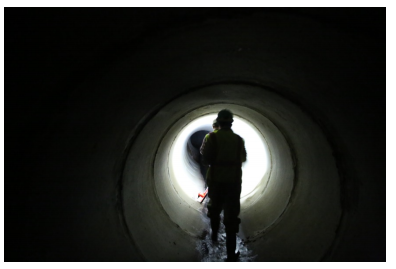
As we go deeper into the storm water system, I take a look back to see where we’ve come from. The grate, Maple Avenue and sunlight seem a long way away.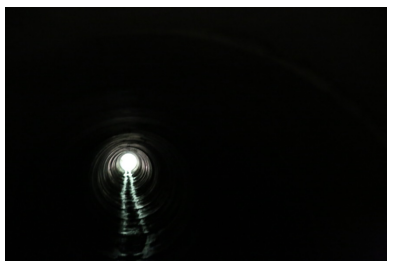
As we move forward, Harless keeps an eye on the portable meter that evaluates our air quality, all while keeping track of the distance we’ve traveled into the pipe. A few hundred meters in, we come across our first manhole access and storm water junction
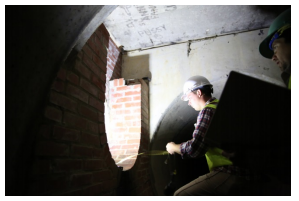
This is where storm water runoff collected from a number of streets along the Maple Avenue corridor to the south joins the main pipe we are traveling through. While the rest of the system is made of reinforced concrete pipe, most of these junctions are brick.
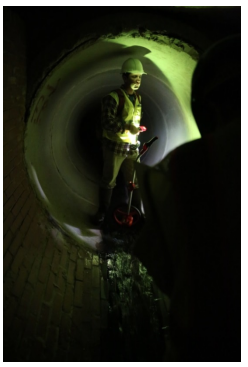
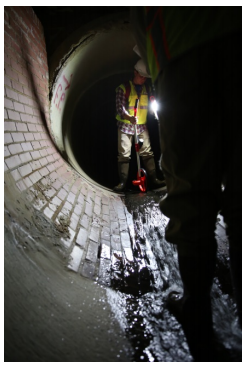
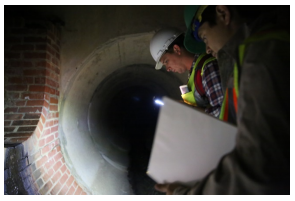
Torrella and Harless make note of the junction’s distance, size and flow before we resume our journey into subterranean Takoma Park.
The storm water system beneath Takoma Park is relatively young. Most of it was built during the past 50 years, with a big push taking place during construction of the Metro rail system in the 1960s and 1970s. The main storm water outfall pipes that we are in drain a surprisingly large area, gathering storm water (and anything else dumped onto sidewalks and streets, e.g, soil, lawn and garden products, car wash water) along the Maple Avenue corridor from the Carroll Avenue ridge to the south, to the ridge north of Piney Branch Road, all the way west past the Takoma Park metro and, in some places, into the District. All told, about a square mile of Takoma Park’s land surface. This drainage area is served by approximately 8 miles of storm water tunnels, which helps explain why it has been so difficult for DEP to find the source(s) of the illicit detergent discharges. At this point in our journey, it’s also proving difficult simply because the detergent isn’t showing up. There’s a modest, steady flow of cool water, but no bubbles. Then, somewhat perversely, our spirits rise when evidence of our elusive quarry appears:
Fresh suds….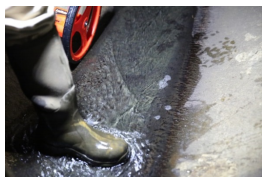
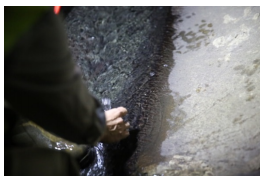
While there is not much volume, it is enough for Torrella to take a sample for analysis later back at the pipe outfall. These suds could be the harbinger of one of the huge detergent slugs we are expecting, but instead they die out rapidly, so we continue making our way up the pipe, heading toward a storm water collection vault about a half kilometer farther up the pipe. Along the way, we continue to pass the landmarks of this underground world. We see storm water inlets that likely deliver water from a single storm water drain or set of drains on a particular street….
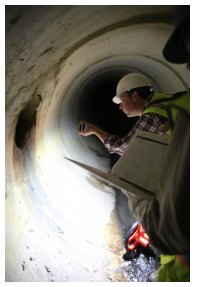
…and access cuts that allow workers (and excess storm flow) to travel between the larger 72-inch main pipes.
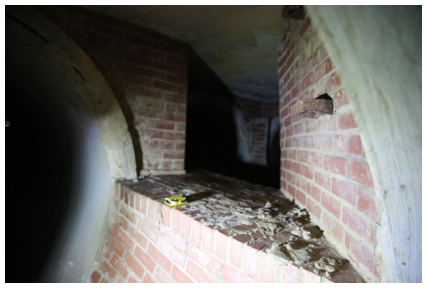
But mostly, it looks like this:
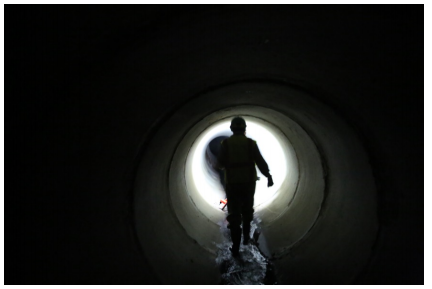
After another 10 minutes of hunched galumphing, the view finally changes. The cramped tunnel suddenly opens up into a concrete cavern that would not look out of place on the set of Harry Potter and the Chamber of Secrets.
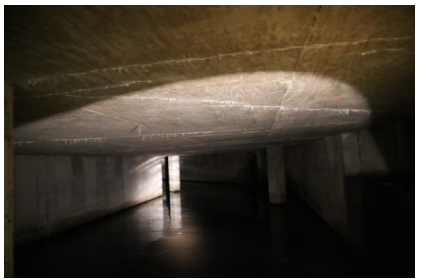
While neither Tom Riddle nor a Horcrux are here, we do come across something unexpected in the darkness…and it is alive.
To Be Continued …


